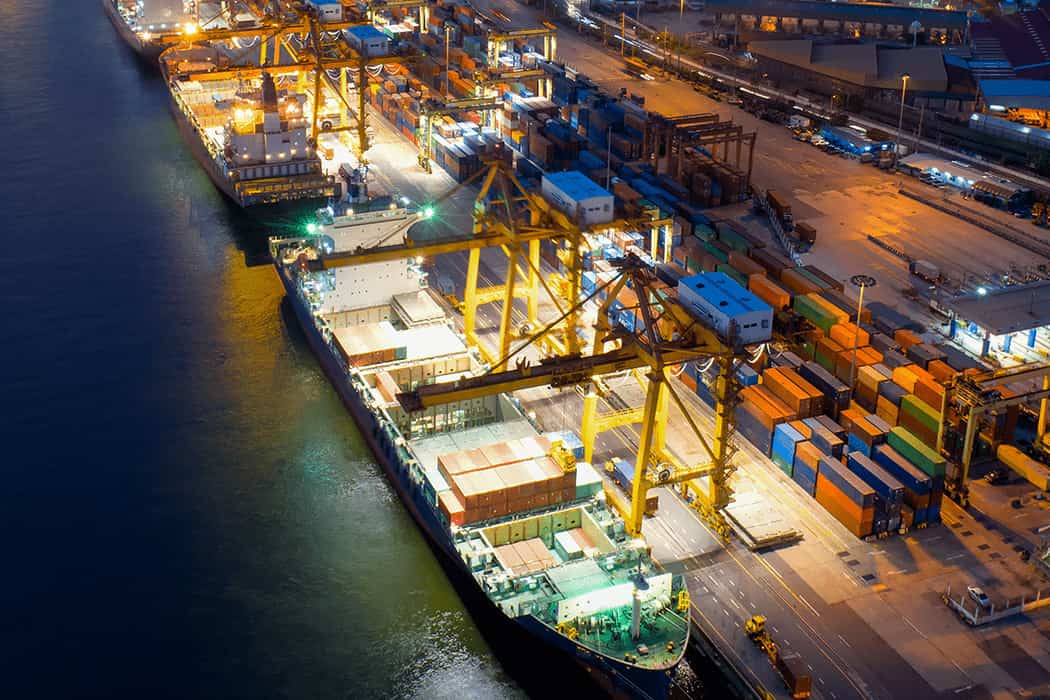
2021 was a difficult year in global logistics due to ongoing volatility. We worked alongside customers navigating the Suez Canal block, hurricanes and cyclones, port and terminal closures due to COVID-19 outbreaks, customs and trade changes, labor shortages and more.
I’ve been in the industry since 1997 and I have never seen this level of continual disruption across the entire supply chain for this length of time. However, with this year’s volatility, I was also given a front-row seat to a new level of hyper collaboration – including individuals going out of their way to help each other, more strategy sessions between shippers and forwarders, and continually leaning into historical data and current market insights to find smarter solutions.
As we approach another potentially volatile year, I wanted to provide key strategies for global shippers to consider.
Seek creative solutions across the entire supply chain
At year-end, we typically see a jump in demand as shippers meet quarter-end quotas and prepare for the upcoming Lunar New Year, during which many factories in China shut down. However, in early 2022, shippers will also be juggling potential delays from the Winter Olympics which will be hosted in Beijing throughout February. All of this is amid a strained supply chain market, which will take time to ease.
As you prepare for 2022, consider what different modes, trade lanes, or inland transportation strategies you can implement in your supply chain. For example, while it may not be feasible to transport 100% of your freight via air, air freight continues to be the fastest way to replenish inventory, so prioritizing specific freight can help keep cargo moving. In fact, C.H. Robinson is running on average 15-17 air charters a week globally for customers looking to avoid the congested ocean ports, and we don’t expect that number to decrease at the start of the new year.
Additionally, as demand and rates will likely continue to stay elevated through the beginning of next year, less-than-container load (LCL) shipping is a strategy to consider. Typically, space for LCL shipments is easier to find especially in a constrained capacity market, since you are only looking for some container space versus an entire empty container. We also continue to see large cost savings with expedited LCL services compared to today’s airfreight environment.
Keep in mind, LCL shipments are not going to bypass congestion at the ports, so inland strategies need to be considered. Currently, many ocean carriers are looking to move more IPI (interior point intermodal) cargo versus focusing on port-to-port. We were able to help increase the flow of cargo inland for our customers by sending more 53-foot containers so cargo on the smaller 40-foot ocean containers can be efficiently consolidated in the larger ones and loaded onto trucks or trains to be taken to inland destinations more quickly. Overall, this increased our container capacity by 25% in Southern California.
As you can see, looking at only one portion of the supply chain or one mode can only get you so far. It’s important to consider all areas to keep your cargo moving.
Utilize data and technology
Although this past year has rendered a lot of unique situations and 2022 may do the same, historical data can still help us find solutions. Finding common trends and themes in your cyclical data can give you an information advantage to make smarter decisions for your supply chain.
Additionally, the right technology tools can give you the visibility and predictability you need to adjust. For example, with the ongoing port congestion and delays, C.H. Robinson enhanced the vessel routing and tracking features within our transportation management system, Navisphere®, to increase the efficiency and accuracy of port ETAs and automatically send updates if changes were discovered. This is important because ocean shipping is only one piece of the equation. Having visibility to changes in real-time gives our team and customers a chance to react and adjust other tactics down the road.
Look to global trade opportunities
While congestion and shortages continue across transportation modes, one area where you may find opportunities for savings is in your global trade strategy. Since each country’s trade policies are unique and can change, it’s important to have regular meetings with your trade advisor to break through the complexity of your total landed costs, including understanding your costs to import, identifying duty recovery possibilities, and reducing your duty exposure via trade agreements.
For example, our team has helped shippers identify thousands to millions of dollars in tariff refunds alone. If you import into the U.S., you can easily check for potential savings and refunds with our online Tariff Search Tool. And, if you’re sourcing from other countries, our team can create a customized sourcing report sharing potential cost savings or avoidance opportunities.
Final Thoughts
While there is no one-size-fits-all approach, the above options provide shippers with strategies to help mitigate delays and identify potential savings as we enter another potentially unpredictable year.
Shippers have had to become increasingly nimble and informed over the past year, and going into 2022 it’s critical to remain agile, be open to alternative solutions, and stay informed on the latest market insights.



